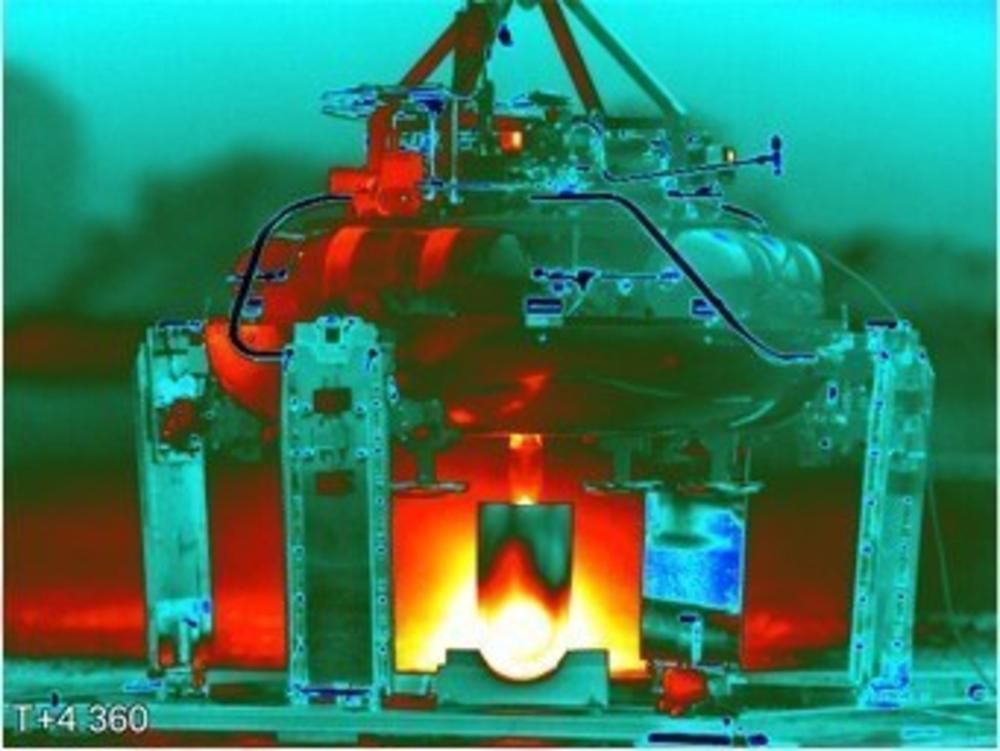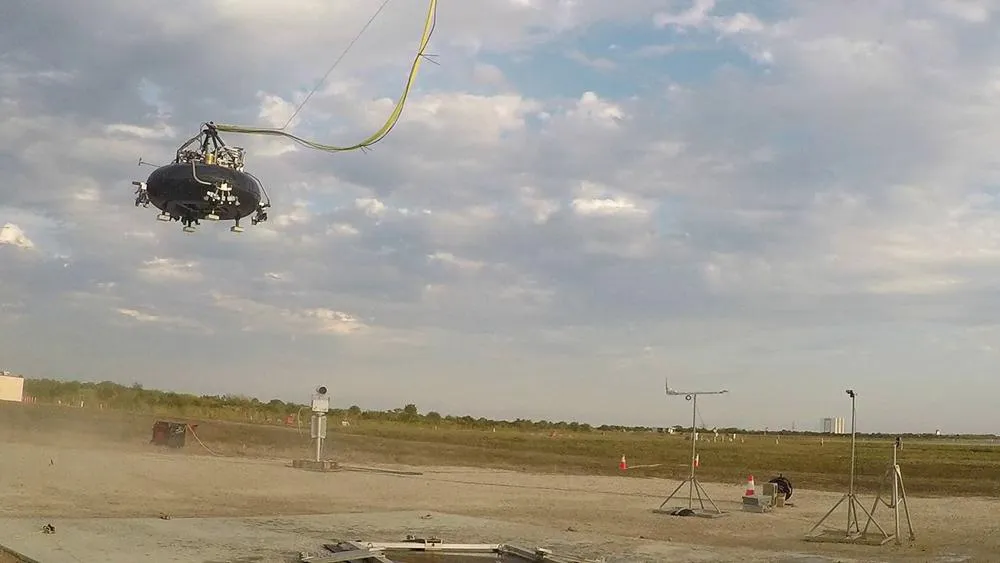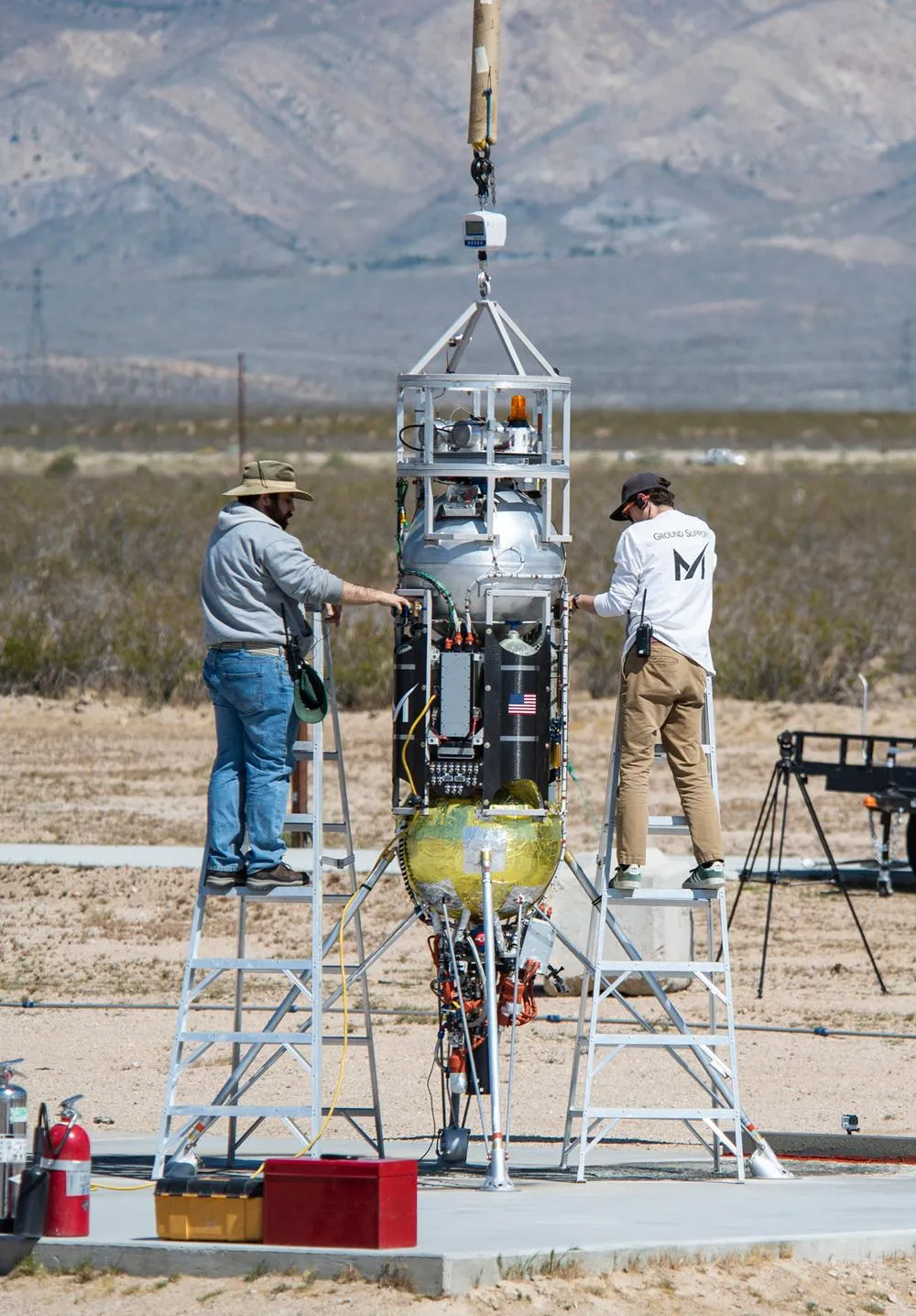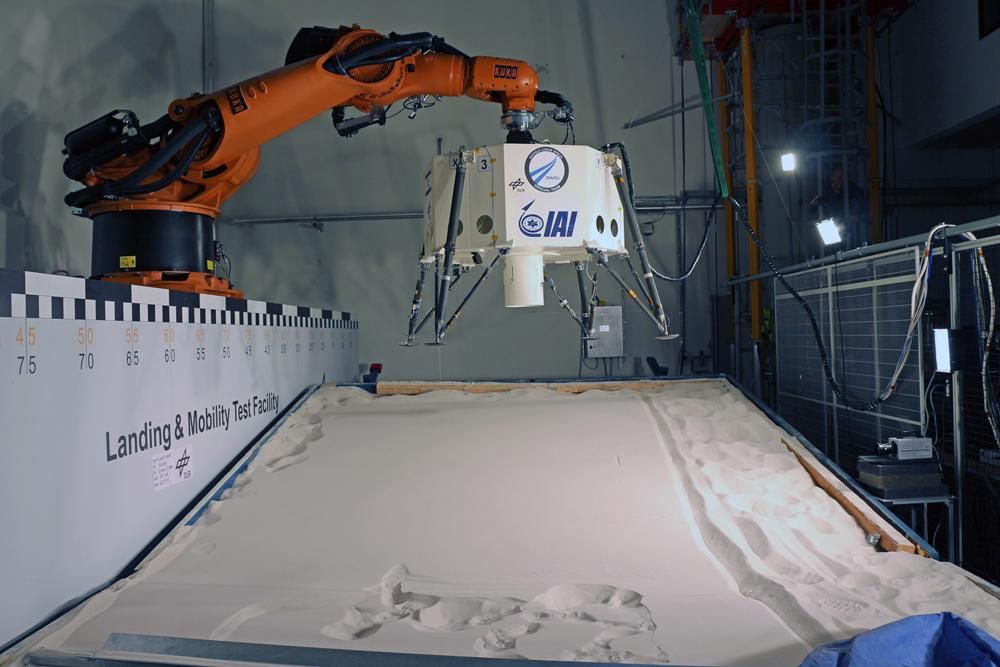The Return to the Moon With Robots
Little landers built by private companies are leading the way back.
/https://tf-cmsv2-smithsonianmag-media.s3.amazonaws.com/filer/ed/f8/edf896b6-d38e-4e0f-b2ca-a0fbfaf541ba/xombie_launch.jpg)
As early as September of next year, a metal-wrapped spacecraft will slowly fall toward the surface of the moon. Retro rockets on its underbelly will puff tiny amounts of fuel into the moon’s tenuous exosphere, silently slowing and steering the uncrewed ship. As its legs find purchase on the sun-bleached gray surface, the moon will once again host the American flag. But this time, the stars and stripes will decorate a spacecraft designed not “for all mankind,” as the Apollo lander was, but for kickstarting lunar commerce.
This time, the spacecraft is not owned by NASA but by the company that built and will operate it. NASA's Commercial Lunar Payload Services program (CLPS) reflects the agency's 21st century outlook that private ownership is the surest path to a robust and self-sustaining lunar economy, in which not only NASA but also other space agencies and private companies will pay to ship freight and eventually people to the lunar surface.
CLPS selected nine companies last November to begin working on robot landers to deliver experiments and cargo to the lunar surface. Last week, NASA announced the three that will ferry yet-to-be-finalized scientific payloads to the moon as soon as next fall. The robots are part of the agency's ambitious Artemis program, which seeks to return humans to the lunar surface in 2024.
Edison, New Jersey’s Orbit Beyond was awarded $97 million to fly as many as four payloads to Mare Imbrium, a lava plain in one of the moon’s craters, by September 2020; Pittsburgh’s Astrobotic has been awarded $79.5 million to fly as many as 14 payloads to Lacus Mortis, a large crater on the near side of the moon, by July 2021; and Intuitive Machines of Houston has been awarded $77 million for up to five payloads to be delivered to Oceanus Procellarum, a mysterious, ancient crater—one of the largest in the solar system—by July 2021.
While these three will be launching first, all nine companies named last fall remain eligible to bid on subsequent task orders.
When Vice President Mike Pence declared at a meeting of the National Space Council in March that American astronauts will return to the moon before the end of 2024 “by any means necessary,” one of the means he may have been referencing was private investment. At the time, the administration’s federal budget requests did not reflect the newly shortened timetable, which advanced by four years the return’s target date.
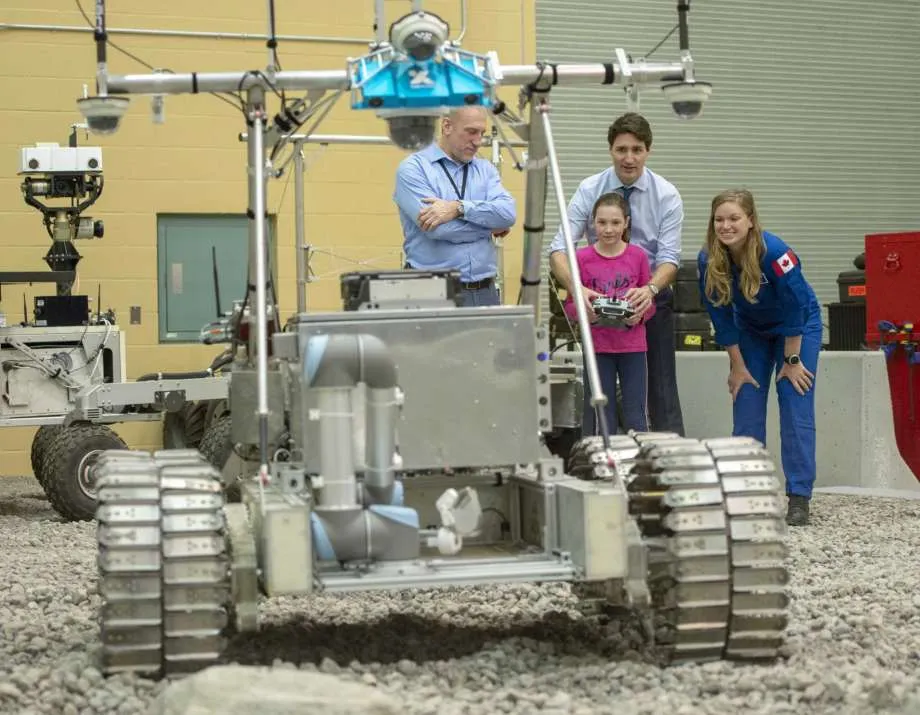
“I go back to the exploration of the western United States,” says Seamus Tuohy, principal director at Draper, one of the CLPS contractors selected last fall but not among the three announced in May. “You had a person or two going out on their own, or a wagon train going out on their own. But when the transcontinental railroad came into being, development exploded. That’s kind of what we’re talking about with the CLPS, where it becomes routine.” Draper is a descendant of the laboratory that created Apollo’s guidance, navigation, and control systems, but its legacy did not place it in NASA's top three.
Draper’s lander, named, perhaps ironically, the Artemis 7, is being built by a consortium. According to Tuohy, it has secured private investment as well as the promise of future NASA funds. Tuohy believes the Apollo-era heritage of the Artemis, named for the Greek goddess of the moon, still gives it an advantage over other companies bidding for the NASA delivery contracts. “It will actually be our seventh landing on the moon,” he says.
Multiple CLPS grant recipients say the program was a shot in the arm for lunar exploration even before the vice president’s jaw-dropping March announcement. “We welcome the lunar whiplash effect of the administration’s directive to NASA to return Americans to the surface of the moon by 2024,” says Bob Richards, founder and CEO of Cape Canaveral-based Moon Express.
The American program of lunar landings unofficially ended December 19, 1972, when the Apollo 17 capsule splashed down in the south Pacific. Astronauts Gene Cernan and Harrison Schmitt were the last humans to walk on the moon, and four years later, a Russian probe called Luna 24 sent the last lunar samples back to Earth.
Another 37 years would pass until the moon saw another Earthly visitor. And when it happened, it arrived from China. The Chang’e 3 lander, named for the goddess of the moon in Chinese mythology, touched down December 14, 2013. It included a small rover named Yutu (Jade Rabbit), which became the first vehicle to trundle across the lunar surface since the Soviet Lunokhod 2’s trek in 1973.
The CLPS landers are much more modest. The program specifies that the first CLPS vehicles must be capable of transporting at least 22 pounds to the moon. That’s too small for a crew’s supplies, never mind a crew, but it’s enough for a few experiments. When Orbit Beyond's lander launches aboard a Falcon 9 rocket in September 2020, among its cargo will be a small rover similar to the 23-pound Sojourner rover used in the Mars Pathfinder mission. Astrobotic’s lander, launching in July 2021, will carry a yet-to-be-determined rover too.
In some ways, CLPS resembles the Google Lunar X Prize, a privately funded, ultimately unsuccessful moon contest. The tech giant staked $30 million on a competition to build a spacecraft that could land on the moon, drive 500 meters, and send HD video home to Earth. The competition was announced in 2007, on the heels of the successful Ansari X Prize, in which SpaceShipOne became the first privately built ship to twice cross the 62-mile-high boundary between Earth’s atmosphere and space. But the Lunar X Prize ended in March 2018, having failed to produce a victor or even a single launch attempt. The 33 entrants had dwindled to five finalists. One of those, Israel’s SpaceIL, attempted a lunar landing in April; its Beresheet spacecraft crashed instead.
Other companies that competed for the Lunar X Prize are getting close: Moon Express estimates 2020 for its first landing.
Moon Express’s Richards says a modular design makes its core lander, the MX-1, easily scalable for customers whose cargo requirements will vary from mission to mission. Resembling a soda can perched on four legs—most of the landers look like this, more or less—it can deliver about 66 pounds to the lunar surface. The largest model, the MX-9, can land 1,100 pounds. “It’s a common core you can optimize for economies of scale,” says Richards. “It’s like LEGOs. That’s how we are hoping to copy what SpaceX has been able to achieve in the launcher business.”
Astrobotic also has a heavy-lift lander in its product offering, named Griffin, which can deposit on the surface the same size cargo—up to 1,100 pounds—as that claimed for the Moon Express MX-9. For smaller payloads, it offers the Peregrine, with a first-mission payload of almost 200 pounds and for future missions, almost 600 pounds. The first landing will target an area measuring about 15 miles by 7.5 miles, but the mission will serve as the test flight of a new navigation sensor system, which Thornton expects will improve precision with subsequent landings. “If that works well, on the next mission we will probably be able to land within a hundred meters [328 feet] of a target,” he says. “We don’t want to make the first mission too hard.” Astrobotic has about a dozen customers who’ve booked space on the 2021 flight, among them Elysium Space, which packages “a symbolic portion of remains” for delivery to the moon; Astroscale, a space-debris removal firm; and DHL Moonbox, for sending small mementos to the moon.
Draper’s Tuohy says his company’s inability to make the X Prize deadline was a problem of money, not technology. Artemis 7 resembles the Apollo lunar lander modules, but it can do something the old Lunar Module could not: It can hop.
The X Prize rules stipulated that competitors’ spacecraft demonstrate mobility, but there was no requirement for a rover, Tuohy says. He jokes that Draper was cheating: “There was nothing in the rules that said you had to stay in contact with the ground. Our system was going to land, then take off and land 500 meters away,” he says. “We still think there is a need to have a system like that, to hop into craters. Now that we are able to talk to NASA as a contractor, one of the things we will recommend is to utilize propulsive hopping.”
The pace of development for these new lunar robots is the fastest in NASA’s history, according to Thomas Zurbuchen, director of the agency’s Science Mission Directorate, the first customer for the companies working on CLPS landers.
Zurbuchen acknowledges that “what we’re doing is really hard going at high speed. We’re purposeful. History has shown that it will take us sometimes two attempts to be successful.”
Other observers foresee the space business maturing to resemble other industries. “The traditional space industry is a hardware industry, but services and operations are going to become increasingly important,” says Takeshi Hakemada, founder and CEO of ispace, a private lunar robotic exploration company that is serving as Draper’s “lander design agent.” “Stepwise development, as in agile software development, will become more important for the space industry too,” says Hakemada.
The commercial landers will grow up alongside scientists’ increasing knowledge of the moon and its resources, says Clive Neal, a lunar geologist at Notre Dame and emeritus chair of the Lunar Exploration Advisory Group (LEAG), an interdisciplinary community of scientists. The pace of the CLPS program will enable exploration and resource prospecting, which will influence the designs for mid-size landers, and eventual human landers ferrying people for long-term or permanent outposts.
“It is unfortunate that we keep developing an architecture that is destination-specific,” he says. “Destination-agnostic should be the way to do things.” Neal doesn’t believe a true expansion of the space economy will occur until the moon has a permanent human presence. After that, “the space agencies can lease the infrastructure built up on the moon to commercial entities,” he says.
Moon Express’s Richards says a modular design makes its core lander, the MX-1, easily scalable for customers whose cargo requirements will vary from mission to mission. Resembling a soda can perched on four legs—most of the landers look like this, more or less—it can deliver about 66 pounds to the lunar surface. The largest model, the MX-9, can land 1,100 pounds. “It’s a common core you can optimize for economies of scale,” says Richards. “It’s like LEGOs. That’s how we are hoping to copy what SpaceX has been able to achieve in the launcher business.”
Astrobotic also has a heavy-lift lander in its product offering, named Griffin, which can deposit on the surface the same size cargo—up to 1,100 pounds—as that claimed for the Moon Express MX-9. For smaller payloads, it offers the Peregrine, with a first-mission payload of almost 200 pounds and for future missions, almost 600 pounds. The first landing will target an area measuring about 15 miles by 7.5 miles, but the mission will serve as the test flight of a new navigation sensor system, which Thornton expects will improve precision with subsequent landings. “If that works well, on the next mission we will probably be able to land within a hundred meters [328 feet] of a target,” he says. “We don’t want to make the first mission too hard.” Astrobotic has about a dozen customers who’ve booked space on the 2021 flight, among them Elysium Space, which packages “a symbolic portion of remains” for delivery to the moon; Astroscale, a space-debris removal firm; and DHL Moonbox, for sending small mementos to the moon.
Draper’s Tuohy says his company’s inability to make the X Prize deadline was a problem of money, not technology. Artemis 7 resembles the Apollo lunar lander modules, but it can do something the old Lunar Module could not: It can hop.
The X Prize rules stipulated that competitors’ spacecraft demonstrate mobility, but there was no requirement for a rover, Tuohy says. He jokes that Draper was cheating: “There was nothing in the rules that said you had to stay in contact with the ground. Our system was going to land, then take off and land 500 meters away,” he says. “We still think there is a need to have a system like that, to hop into craters. Now that we are able to talk to NASA as a contractor, one of the things we will recommend is to utilize propulsive hopping.”
The pace of development for these new lunar robots is the fastest in NASA’s history, according to Thomas Zurbuchen, director of the agency’s Science Mission Directorate, the first customer for the companies working on CLPS landers.
Zurbuchen has expressed the desire to get experiments on the moon by the end of this year, but Astrobotic’s John Thornton dismisses the notion that any CLPS contender will be ready to launch sooner than the first quarter of 2021. “We are going as fast as we can possibly go,” he says.
Zurbuchen also acknowledges that “what we’re doing is really hard going at high speed. We’re purposeful. History has shown that it will take us sometimes two attempts to be successful.”
Other observers foresee the space business maturing to resemble other industries. “The traditional space industry is a hardware industry, but services and operations are going to become increasingly important,” says Takeshi Hakemada, founder and CEO of ispace, a private lunar robotic exploration company that is serving as Draper’s “lander design agent.” “Stepwise development, as in agile software development, will become more important for the space industry too,” says Hakemada.
The commercial landers will grow up alongside scientists’ increasing knowledge of the moon and its resources, says Clive Neal, a lunar geologist at Notre Dame and emeritus chair of the Lunar Exploration Advisory Group (LEAG), an interdisciplinary community of scientists. The pace of the CLPS program will enable exploration and resource prospecting, which will influence the designs for mid-size landers, and eventual human landers ferrying people for long-term or permanent outposts.
“It is unfortunate that we keep developing an architecture that is destination-specific,” he says. “Destination-agnostic should be the way to do things.” Neal doesn’t believe a true expansion of the space economy will occur until the moon has a permanent human presence. After that, “the space agencies can lease the infrastructure built up on the moon to commercial entities,” he says.
In February NASA announced its initial lineup of 12 lunar payloads, all of them scientific instruments. The Neutron Spectrometer System and Advanced Neutron Measurements at the Lunar Surface will measure hydrogen abundance, a proxy for the amount of water in the moon’s regolith. This information could help future mission planners decide where to mine for water, which will provide hydrogen and oxygen for rocket fuel. The Stereo Cameras for Lunar Plume-Surface Studies will take 3-D pictures of the interaction between the lander’s engine exhaust and the regolith. The analysis will help engineers design landing software for future missions and give them a better sense of the regolith’s properties, like the size of dust particles and how long they stay airborne. The Solar Cell Demonstration Platform for Enabling Long-Term Lunar Surface Power is designed to test a solar panel package that could potentially power a long-duration mission even through the lunar night.
Meanwhile, the moon also holds some scientific secrets that geochemists like Neal want answered. Studying its composition can tell scientists about the early history of Earth and the formation of the solar system. Shielded by Earth from the radio noise from the sun and other cosmic sources, the moon is one of the solar system’s quietest places, especially its far side, which could be a prime location for a radio astronomy observatory someday.
The lunar science community has been working with NASA since January 2018 to define its goals for future research, says Sarah Noble, a geologist at the space agency who directs the Apollo Next Generation Sample Analysis program. The subjects they want to study include the early bombardment history of the solar system, the composition of the moon, and the history of lunar magnetism and lunar volcanism, which can shed light on the history of rocky worlds.
Water mining, raw-material construction, and radio astronomy are all vastly different endeavors. That’s one reason nine delivery services make sense, Tuohy says. When it comes to the moon, one size doesn’t fit all.
“It would be like me buying a Ferrari and then using it to get groceries,” he says. “There may be some payloads that are uniquely suitable to us [at Draper], and some that may be uniquely unsuitable to us. Because NASA has these different sources, they can build a tempo where they’re landing multiple times a year with different cargo.”
The moon holds so many possible resources—so many potential riches for private firms—that some scientists are increasingly worried about safeguarding it. In a recent paper, Claudio Maccone of the International Academy of Astronautics and Istituto Nazionale di Astrofisica in Italy proposed a 1,100-mile-wide radio free zone on the far side. Others have been calling for a more nuanced discussion of what the moon means. Vera Assis Fernandes, a lunar researcher at the University of Manchester in the U.K., published a paper calling for a discussion of ethical and social aspects of a return to the moon. Exploration, development, and settlement would fundamentally change the moon’s surface, she argues, and new international treaties should ensure global lunar stewardship. “As we plan the next steps in the cosmic venture, we also need to be able to acknowledge celestial bodies as entities that need to be respected, irrespective of their having life,” she writes.
When the first small landers fly, they won’t be alone. On the heels of the successful Chang’e 3 mission, China quickly mobilized to send a relay satellite to orbit between the Earth and moon in 2018. The Queqiao probe launched last May and parked between the Earth and moon so it could broadcast signals from the moon’s far side, a world first. Then the Chang’e 4 lander lifted off December 7. The probe touched down in a crater on the moon’s far side, in the South Pole-Aitken basin, on January 3, another first. The Chinese National Space Agency has big plans for additional landers and eventual human missions. The country plans to launch Chang’e 5, a sample-return mission, in December.
India also plans a lunar landing this year: Chandrayan-2 will land a rover near the lunar south pole. And the European Space Agency has proposed something much more ambitious. In 2016, ESA director general Jan Wörner described an international “moon village,” which would gather scientists, artists, and public and private groups for ongoing research to lay groundwork for tourism and resource prospecting.
Neal says that if NASA’s budget today were the equivalent of Apollo’s in the 1960s, the fast pace sought by Vice President Pence would be almost achievable. But the decade-long CLPS program is designed to offer more than speed. “The important thing is that you build up capabilities slowly,” he says. “You think it through. If you have a low budget year, you have less progress. That’s why prime deadlines become difficult, because you set yourself up for failure. The reason [CLPS] is different is because of the commercial interest. And that is going to make it sustainable.”
Tuohy believes an uptick in frequency of lunar missions after the first launches next year will encourage innovation. “With missions like InSight on Mars, which was spectacular, they are so precious, you are careful of what you bring on board,” he says. “But when you go once a month, you can start saying, ‘Hey let’s put an oven on board. Let’s try something out.’ You can start doing things which seem riskier. It’s not your only chance in your career to get there.”
Neal, 58, says he does not expect to see humans on Mars in his lifetime, but he does think he’ll live to see people on the moon who are “just” there for work or as tourists, rather than as astronauts or scientists. “I would love for my graduates from Notre Dame to come back and visit and say, ‘I am going to go work on the moon,’ ” he says.
Fifty years after humans first touched it, the moon remains reachable only through the wealth of nations. CLPS may finally expand that reach.
